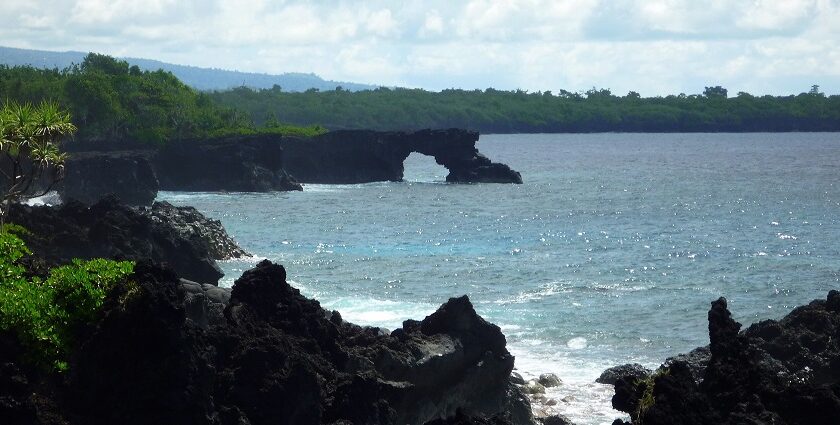Our detailed list of the best islands in the Samoa Islands is your perfect guide to explore this stunning Pacific paradise. From lush rainforests and volcanic landscapes to serene beaches and vibrant culture, each island offers something unique. Samoa offers all of these things in stunning fashion, whether you’re looking for adventure, leisure, or cultural immersion. Discover hidden gems, traditional villages, and natural wonders that make these islands unforgettable. Ideal for nature lovers, photographers, and cultural explorers alike, this list will help you plan an enriching and memorable escape to the heart of Polynesia.
10 Best Of The Samoa Islands Worth Visiting
Experience the finest of the Polynesian coastline with our detailed list of the 10 best islands in the Samoa Islands worth visiting for all tourists.
1. Upolu
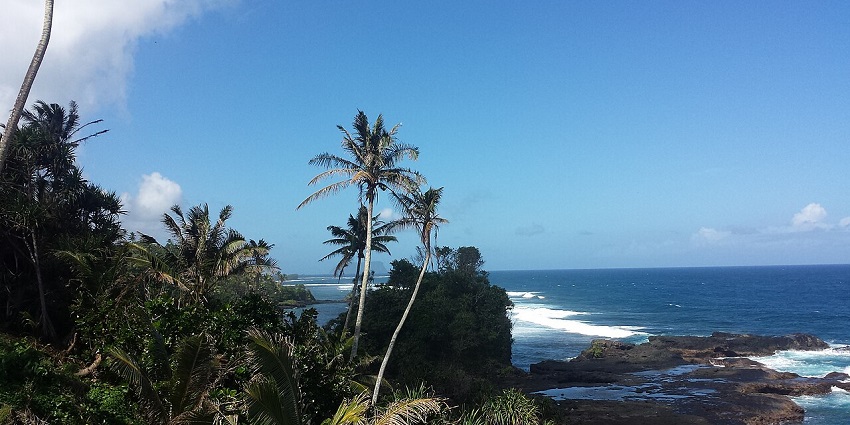
Photo: Rickard Törnblad / Wikimedia Commons
Upolu is Samoa’s vibrant heart, home to Apia and lush natural wonders. The island spans around 75 km and 1,125 km², making it perfect for day trips to waterfalls, beaches and snorkelling spots. Piula and Vaiula cave pools provide a combination of freshwater cave swimming and ocean trips to the Sua Ocean Trench. Rare local birds and endemic plants can be found in the inland jungles. Surfing is popular at southern breaks, while the north coast appeals to anglers.
Main Highlights: Vibrant capital Apia, Piula & Vai’ula caves
Food To Try: Palusami (coconut‑baked taro leaves), Oka iʻa (raw fish in coconut lime)
2. Savai’i
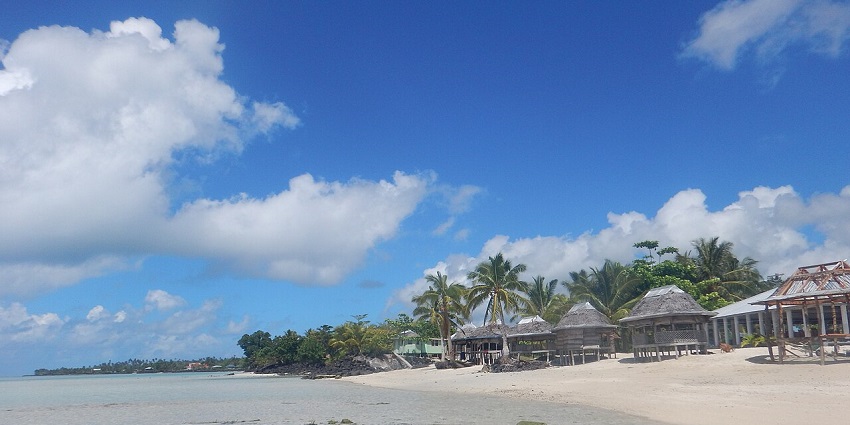
Photo: Rickard Törnblad / Wikimedia Commons
Savai’i, Samoa’s largest island, is a wild playground of lava fields, waterfalls and caves. Afu Aau falls cascade into three pools, some deep enough for swimming. The 1905 volcanic eruption of Saleaula left behind striking lava flows and abandoned towns around the region. Saleaula’s 1905 volcanic eruption etched dramatic lava flows and ghost villages across the land. Mt Silisili, soaring to 1,858 m, offers multi-day treks with local guides. Kayak and diving cruises reveal coral reefs offshore. The island’s market at Salelologa bustles with local crafts, fresh fish and tropical fruits.
Main Highlights: Afu Aau triple‑pool waterfall, Saleaula lava fields/village ruins, Mt Silisili treks
Food To Try: Oka iʻa, taro bread, fresh seafood like octopus & crayfish
3. Manono
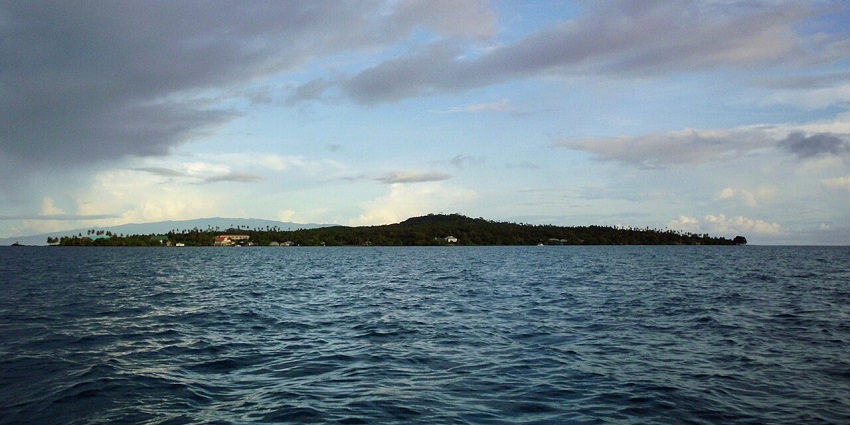
Photo: Виктор Пинчук / Wikimedia Commons / Image For Representation Only
Manono, one of the best among the Samoa Islands, is a serene, traffic-free community just 4 km from Upolu. A full perimeter walk takes only two hours, weaving through palm groves, historic sites and two beaches. On cultural tours, families share stories of early missionaries, the Wesley monument and legend-rich “99 Stones”. The island’s small church is a peaceful spot often framed by the lagoon. Here, days end with a Samoan-style lunch hosted by locals, and a touching farewell song.
Main Highlights: Traffic‑free 4 km loop, palm groves, Wesley monument, legend of “99 Stones
Food To Try: Village‑served umu lunch: taro, fish, chicken, local fruits
4. Apolima
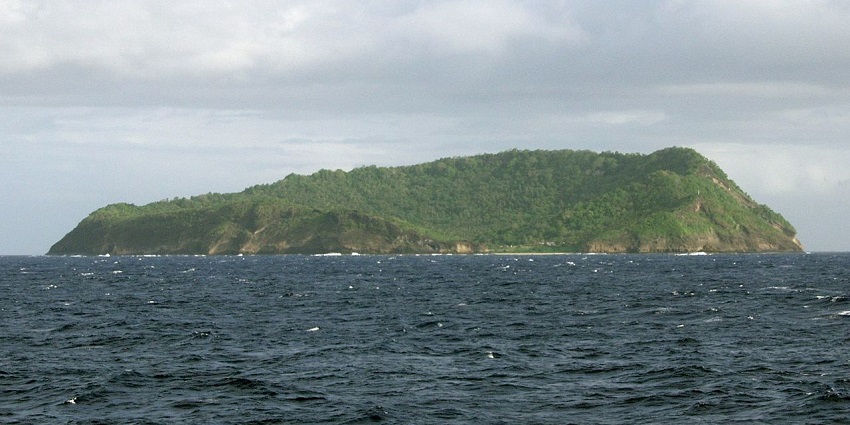
Photo: CloudSurfer / Wikimedia Commons
The smallest inhabited Samoan island, Apolima, is home to a close-knit community of perhaps 100 people living inside an old crater. A short but steep hike leads to a lighthouse overlooking blue seas. It involves 315 concrete steps and takes under 30 minutes to return. With few tourists, it feels untouched and calm amidst the many of the Samoa islands. Local families welcome overnight stays in traditional fales. Village hosts often demonstrate weaving and storytelling and the community lives simply, growing food and fishing nearby.
Main Highlights: Steep 315‑step hike to lighthouse inside volcanic crater, tiny community, traditional fales
Food To Try: Simple umu‑cooked fish & root veg served by famers in fale
5. Namu’a
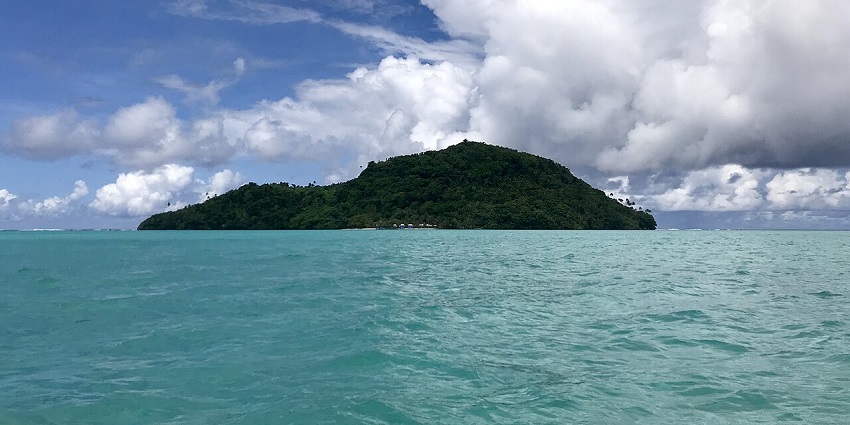
Photo: Tmarki / Wikimedia Commons
Namu’a is a secluded islet just off Aleipata’s coast, reachable within 10 minutes by boat. Its sandy beaches are edged by coconut palms and clear reefs that attract turtles, which visitors can swim with during snorkelling sessions. A few beachfront fales offer rustic overnight charm, including meals and boat transfers. It’s perfect for quiet sunbathing and relaxing and the island’s tiny, untouched landscape invites lazy exploration.
Main Highlights: Sandy beaches, snorkelling with turtles, beachfront fales
Food To Try: Fresh fish & tropical fruit platters
6. Nuʻulopa
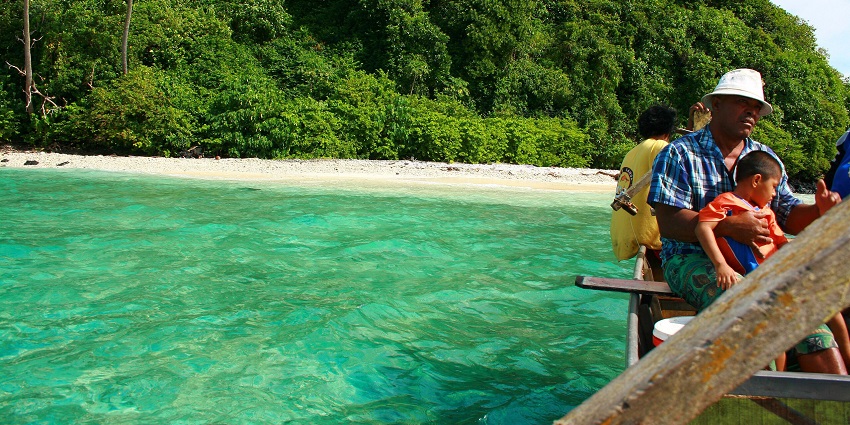
Photo: Neil / Wikimedia Commons
Nuʻulopa, a rocky islet between Manono and Apolima, rises to about 50 m and remains uninhabited. It’s a conservation area for flying foxes and a resting site for sea turtles offshore. The island also holds burial grounds of former high chiefs. Visitors enjoy kayaking around its shores during low tide. The forested hilltop offers bird‑spotting opportunities. Due to the lack of facilities, eco-tours and private charters are the ideal ways to plan visits. Bring water, snacks and a respectful mindset here during your trip.
Main Highlights: Conservation islet for flying foxes, turtle resting bays, sacred chief burial grounds
Food To Try: Not available ( bring your own)
7. Fanuatapu
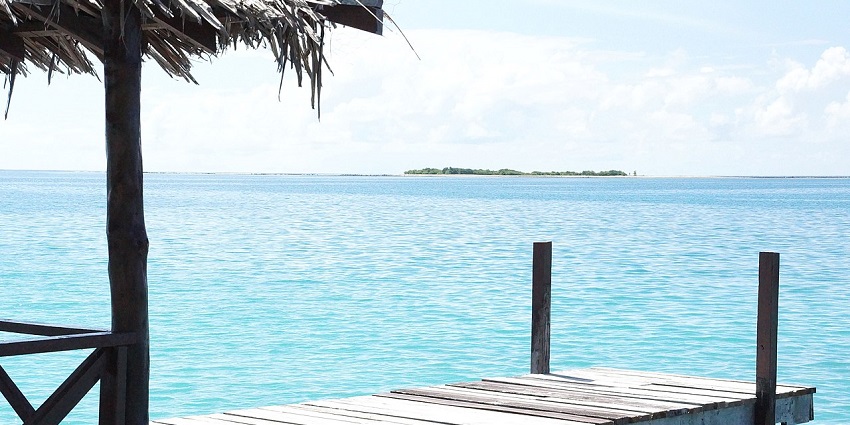
Photo: Claire Charters / Wikimedia Commons / Image For Representation Only
The peaceful volcanic tuff-ring islet of Fanuatapu lies to the east of Upolu. It features an automated lighthouse and rocky shoreline. Vegetation includes rare plant species found only on the Aleipata islets. The islet is uninhabited, with no visitor facilities available. Ideal for guided boat tours and bird watching, the terrain is mostly rocky. Thus, sturdy shoes are recommended. Trips typically combine visits to nearby Namu’a and Nu‘utele.
Main Highlights: Volcanic tuff‑ring landscape, automated lighthouse, excellent birdwatching
Food To Try: Not available ( bring your own)
8. Nu’utele
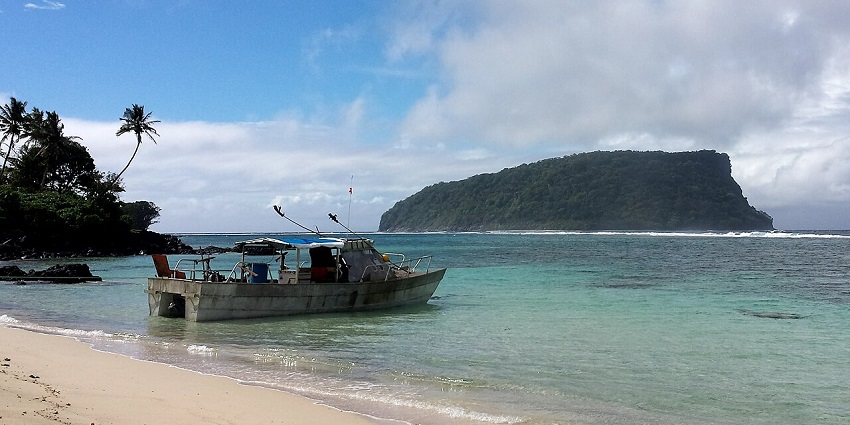
Photo: Rickard Törnblad / Wikimedia Commons
Nu’utele is the largest Aleipata islet (~1.15 km²), located 1.3 km off Upolu’s shore. Its volcanic tuff cliffs rise sharply from the sea, offering dramatic photography backdrops. Restoration efforts aim to remove invasive predators and protect native birds and bats. Wildlife thrives in its relatively untouched habitat. Both Nu’utele and neighbouring Nu’ulua are frequently included in tours. Personal exploration is limited; guided visits ensure respect for local conservation protocols.
Main Highlights: Dramatic 60‑m cliffs, native bird/bat preservation
Food To Try: Sample oka iʻa at launch point ( bring your own)
9. Nu‘usafee
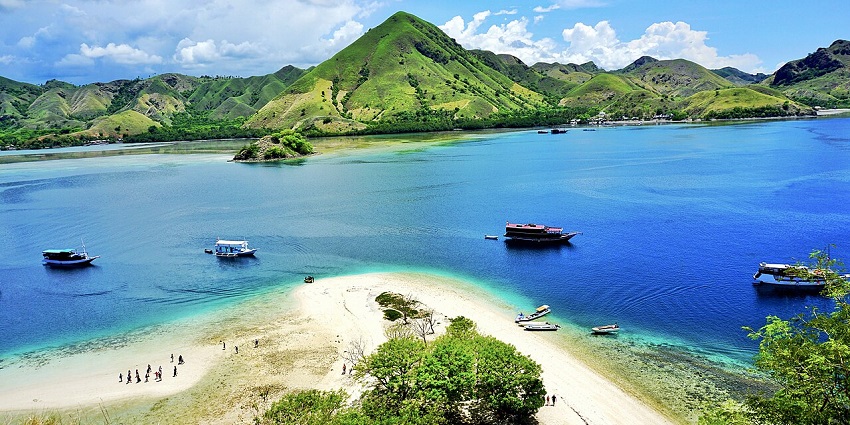
Photo: AgRidwan / Wikimedia Commons / Image For Representation Only
Part of the Aleipata group, Nu‘usafee is a small tropical islet close to Namu’a. It is uninhabited but boasts calm reefs ideal for snorkelling and kayaking. Vegetation includes coastal woodland with rare flora distinct from Upolu’s beaches. Boat tours offer day‑trip stops with picnic lunches at this island among the many in the Samoa islands. Bring snorkel gear, sun protection, and water, helping you to have a tranquil island immersion without crowds.
Main Highlights: Calm reefs for snorkelling/kayaking, rare coastal woodland flora, untouched tropical scenery
Food To Try: Pisupo wraps or palusami
10. Nu‘ulua
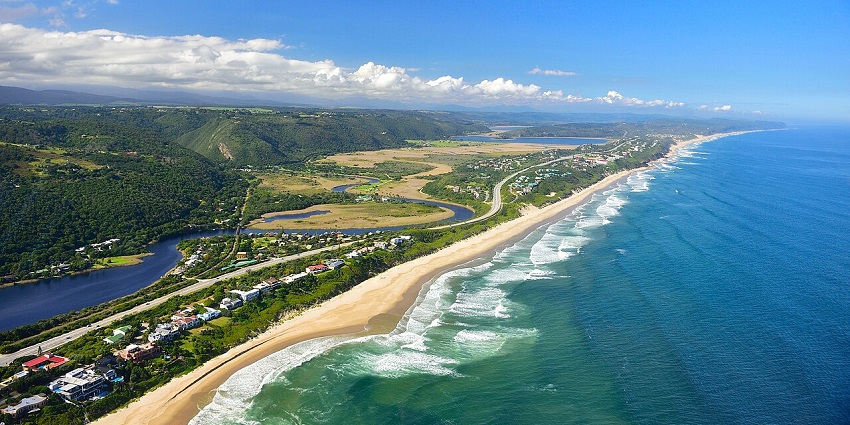
Photo: South African Tourism / Wikimedia Commons / Image For Representation Only
Nu‘ulua, east of Nu’utele, covers about 0.25 km² and features dense coastal woodland. It serves as a refuge for local bats and unique species like the tooth-billed pigeon. Conservation efforts mirror those on Nu’utele, aiming to restore native species. Access is by guided boat tours only. There are no tourist amenities; please respect wildlife and bring necessities. Birdwatchers and nature lovers will appreciate the island’s remote serenity and ecological significance.
Main Highlights: Uninhabited islet for bats & tooth‑billed pigeons, guided‑tour conservation access
Food To Try: Enjoy fa’apapa or panikeke on the boat trip ( bring your own)
The Samoa Islands promise an unforgettable tropical escape filled with breathtaking landscapes, rich cultural experiences, and warm hospitality. From pristine beaches and cascading waterfalls to vibrant markets and traditional fales, Samoa offers something for every traveller. Whether you seek adventure, relaxation, or a deep dive into Polynesian heritage, these islands deliver an experience like no other. Samoa is a destination that will leave you with cherished memories long after your visit. Plan your trip today with TripXL!
Cover Photo: Sarah Kelemen / Wikimedia Commons


 WhatsApp
WhatsApp
 Twitter
Twitter
